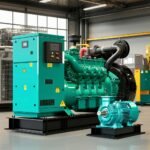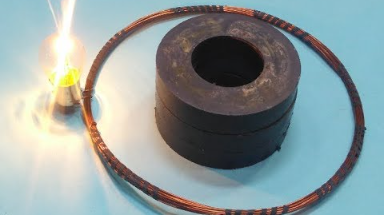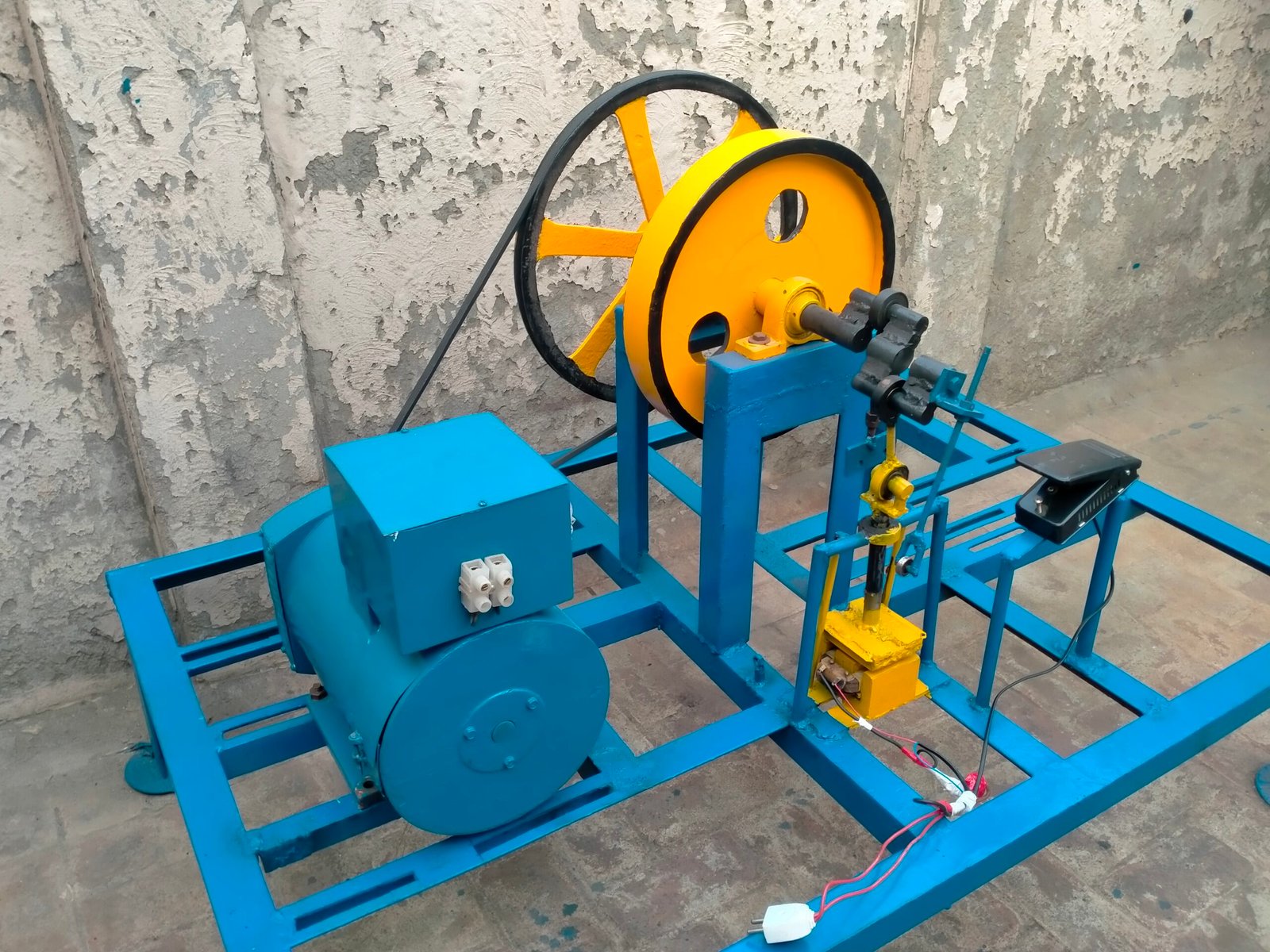
Free Energy Generated by Magnet: 100% Real New Technology, New Science
In our relentless pursuit of innovation, we have stumbled upon a groundbreaking discovery that is set to revolutionize the world of energy production. We are talking about the untapped potential of free energy generated by magnets. Yes, you heard it right! This is not a figment of science fiction, but a tangible reality that is reshaping our understanding of energy generation. This 100% real new technology is a testament to the relentless strides of new science, pushing the boundaries of what we thought was possible.
Harnessing the power of magnets to generate free energy is a concept that has been around for a while, but it is only now that we are beginning to unlock its true potential. The principle behind this technology is simple yet profound. Magnets possess a natural force field, a magnetic field that exerts a force on other magnets and magnetic materials. By strategically arranging these magnets, we can create a perpetual motion machine, a device that continues to operate indefinitely without an energy source. This is the crux of our technology, a game-changer that is set to redefine the energy landscape.
The beauty of this technology lies in its simplicity and efficiency. It does not require any fuel, it does not produce any harmful emissions, and it can operate continuously without any external input. This makes it a sustainable and environmentally friendly solution, a beacon of hope in our fight against climate change. Moreover, this technology is not confined to large-scale energy production. It can be scaled down to power individual households, making it a viable solution for off-grid living and energy independence.
However, the journey to this discovery has not been a smooth one. It has been a path paved with challenges and skepticism. The concept of free energy is often met with disbelief and dismissal, a reaction that is not entirely unwarranted. After all, it seems to defy the fundamental laws of physics. But this is where new science comes into play. It challenges the status quo, it questions the established norms, and it dares to venture into the unknown. And it is through this relentless pursuit of knowledge that we have been able to bring this technology to life.
In conclusion, the free energy generated by magnets is not a myth, but a reality that is set to transform the world of energy production. It is a testament to the power of innovation and the limitless potential of new science. As we continue to explore this technology, we are confident that it will open up new avenues of sustainable and efficient energy production, paving the way for a greener and more sustainable future.
Unveiling the Power of Magnets
Magnets have been a subject of fascination and intrigue for centuries. Their ability to attract and repel objects without any apparent source of energy has sparked the curiosity of scientists and laymen alike. Today, we delve into the world of magnets and their potential to generate free energy, a concept that could revolutionize our understanding of energy production and consumption.
In our quest to understand the world around us, we find ourselves drawn to the enigmatic forces that shape our reality. Among these, the power of magnets stands out as a particularly fascinating subject. Magnets, with their invisible fields and forceful attractions, have captivated human curiosity for centuries. Today, we delve into the heart of this magnetic allure, unraveling the mysteries that lie within and exploring the potential that awaits us in the realm of magnetic power.
Magnets, in their simplest form, are objects that generate a magnetic field, a force that pulls on other ferromagnetic materials, such as iron, and attracts or repels other magnets. The source of this magnetic force is the movement of electric charges. But this is just the tip of the iceberg. The true power of magnets extends far beyond their ability to stick to your refrigerator or hold up a child’s drawing.
In the world of technology, magnets play a crucial role. They are integral components in a wide array of devices, from the humble compass to advanced MRI machines. In the realm of energy, magnets are key players in the generation of electricity. In fact, the principle of electromagnetic induction, discovered by Michael Faraday, is the fundamental process behind the operation of generators, motors, and transformers.
But the power of magnets is not confined to these practical applications. Magnets have the potential to revolutionize our understanding of the universe. In the field of quantum physics, for instance, the study of magnetic monopoles—hypothetical particles that possess just one magnetic pole—could provide insights into the fundamental nature of matter.
Moreover, the power of magnets extends into the realm of health and medicine. Magnetic fields, when used correctly, have been shown to have therapeutic effects. Magnetic Resonance Imaging (MRI), a powerful diagnostic tool, uses a strong magnetic field to generate detailed images of the body’s internal structures.
In the world of materials science, magnets are helping to drive innovation. Researchers are developing new magnetic materials with unique properties, such as superconductors and spintronics, which could transform the way we store and process information.
In the realm of environmental sustainability, magnets offer promising solutions. Magnetic levitation (Maglev) technology, for instance, provides a highly efficient and environmentally friendly mode of transportation.
In conclusion, the power of magnets is a vast and multifaceted field, brimming with potential. From technology and energy to health and environmental sustainability, magnets are shaping our world in countless ways. As we continue to explore and harness this magnetic power, we can look forward to a future of endless possibilities.
In our journey to unveil the power of magnets, we have only scratched the surface. The magnetic field is a vast and uncharted territory, waiting to be explored. As we delve deeper into this realm, we are bound to uncover more of its secrets, and with them, the potential to reshape our world. So, let us embark on this magnetic journey, driven by curiosity and guided by science, as we unravel the mysteries and harness the power of magnets.
The Science Behind Magnets
Magnets are not just objects that stick to your refrigerator. They are a manifestation of one of the fundamental forces of nature – magnetism. This force arises due to the movement of electric charges, resulting in attractive and repulsive forces between objects. Understanding this principle is the first step towards harnessing the power of magnets for energy generation.
In our quest to unravel the enigma of the universe, we often stumble upon phenomena that leave us awestruck, and one such marvel is the science behind magnets. The magnetic force, an invisible yet potent power, has been a subject of fascination and study for centuries. It’s a force that invisibly connects, repels, and orchestrates a symphony of movements in our everyday lives. From the compass that guided ancient mariners to the modern hard drives that store our precious data, the magic of magnets is omnipresent. But what exactly is this magnetic force? How do magnets work? What makes them attract or repel? Let’s delve into the captivating world of magnetism and demystify the science behind magnets.
At the heart of magnetism lies the atom, the smallest particle of a chemical element that retains its chemical properties. Every atom is a tiny magnet, thanks to the electrons orbiting its nucleus. These electrons, each carrying a negative charge, spin around the nucleus, creating a minute magnetic field. In most materials, these atomic magnets are arranged haphazardly, nullifying their magnetic effect. However, in magnetic materials like iron, nickel, and cobalt, something extraordinary happens. The atomic magnets align themselves in a particular direction, creating a strong magnetic field. This alignment of atomic magnets, known as ‘domains’, is the secret behind the magnetic power of a magnet.
But how does a magnet attract or repel? The answer lies in the magnetic field, an invisible region around a magnet where magnetic force is exerted. The magnetic field emanates from the magnet’s north pole, travels through space, and re-enters the magnet at the south pole. When another magnet or a magnetic material comes within this field, it experiences a force. If the object is a magnet, it will either be attracted (if the opposite poles are facing each other) or repelled (if the same poles are facing each other). If the object is a magnetic material, it will always be attracted, irrespective of the pole.
The science behind magnets is not just about attraction and repulsion. It’s a vast field that encompasses various aspects of physics, chemistry, and even quantum mechanics. It’s a science that has given us the compass, the electric motor, the MRI machine, and countless other inventions. It’s a science that continues to inspire and intrigue us, pushing the boundaries of our knowledge and understanding. As we continue to explore the magnetic universe, who knows what other wonders we might discover? The science behind magnets, indeed, is as fascinating as it is complex.
The Magnetic Field: An Invisible Powerhouse
The magnetic field is the region around a magnet where magnetic forces can be detected. It is this field that holds the key to generating free energy. By manipulating this field, we can potentially create a continuous flow of energy, a concept that forms the basis of magnetic energy generators.
In our exploration of the universe and its mysteries, we delve into the realm of the unseen, the uncharted, and the unfathomable. Today, we turn our attention to the magnetic field, an invisible powerhouse that silently shapes our world and beyond. This invisible force, often overlooked, plays a pivotal role in our existence, from the smallest atomic particles to the vast expanse of the cosmos. The magnetic field, a natural phenomenon, is a force field that surrounds the Earth and other celestial bodies, protecting them from harmful solar radiation and cosmic rays. It is a silent guardian, an unseen shield, and a cosmic sentinel that safeguards our planet and its delicate life forms.
The Earth’s magnetic field, also known as the geomagnetic field, is a complex and dynamic force. It is generated by the convective motion of molten iron within the Earth’s outer core, a process known as the dynamo effect. This invisible force field extends thousands of kilometers into space, forming a protective barrier against the onslaught of solar wind, a stream of charged particles emanating from the Sun. Without this protective shield, our planet’s atmosphere would be stripped away, rendering life as we know it impossible.
The magnetic field is not a static entity; it is a living, breathing force that fluctuates and evolves over time. It has reversed its polarity numerous times throughout Earth’s history, in events known as geomagnetic reversals. These reversals, though seemingly random, follow a pattern that scientists are still striving to understand. The study of these magnetic reversals, known as paleomagnetism, provides valuable insights into the Earth’s interior and its geological history.
Beyond our planet, the magnetic field plays a crucial role in the cosmos. It shapes the formation of stars and galaxies, influences the behavior of cosmic rays, and drives the awe-inspiring spectacle of auroras. These celestial light shows, also known as the Northern and Southern Lights, are a testament to the power and beauty of the magnetic field. They occur when charged particles from the Sun interact with the Earth’s magnetic field, causing atoms in the upper atmosphere to emit light.
In conclusion, the magnetic field is an invisible powerhouse that shapes our world and the cosmos. It is a force of nature that, despite its invisibility, has a profound impact on our existence. As we continue to unravel its mysteries, we gain a deeper understanding of our planet, our universe, and our place within it. The magnetic field, in all its complexity and grandeur, serves as a reminder of the intricate and interconnected nature of the cosmos. It is a testament to the unseen forces that shape our existence, a silent sentinel that guards our planet, and a cosmic powerhouse that drives the dynamism of the universe.
In our quest to understand the universe, we must not overlook the invisible forces that shape our world. The magnetic field, in all its complexity and grandeur, is a testament to the unseen forces that shape our existence. It is a silent sentinel that guards our planet, a cosmic powerhouse that drives the dynamism of the universe, and a fascinating subject of scientific inquiry. As we continue to unravel its mysteries, we gain a deeper understanding of our planet, our universe, and our place within it. The magnetic field, an invisible powerhouse, is a force to be reckoned with.
Magnetic Energy Generators: A New Era of Energy Production
Magnetic energy generators, or magnet motors, are devices designed to convert the magnetic energy into electrical energy. This technology, while still in its nascent stages, holds immense potential for sustainable and cost-effective energy production.
In the realm of energy production, we are on the cusp of a revolutionary shift, heralding the dawn of a new era. The advent of Magnetic Energy Generators is set to redefine the landscape of energy generation, offering a sustainable, efficient, and cost-effective solution to the world’s ever-growing energy needs. This groundbreaking technology harnesses the power of magnetic fields to generate electricity, a process that is not only environmentally friendly but also remarkably efficient. Unlike traditional energy sources, which rely on finite resources and contribute to environmental degradation, Magnetic Energy Generators offer a clean, renewable source of power that could potentially meet the world’s energy demands indefinitely.
The principle behind Magnetic Energy Generators is rooted in the fundamental laws of physics. By leveraging the inherent properties of magnets, these generators create a perpetual motion machine, a device that can operate indefinitely without an energy input. This is achieved by arranging magnets in a specific configuration that creates a continuous cycle of attraction and repulsion, generating a constant flow of energy. This energy is then converted into electrical power, which can be used to power homes, businesses, and even entire cities.
The potential of Magnetic Energy Generators is immense. Not only do they offer a solution to the world’s energy crisis, but they also present a viable alternative to fossil fuels, which are rapidly depleting and contribute significantly to global warming. By harnessing the power of magnets, we can reduce our reliance on these harmful energy sources and move towards a more sustainable future. Moreover, Magnetic Energy Generators are highly scalable, meaning they can be used to power anything from a small household appliance to a large industrial complex.
However, the journey towards widespread adoption of Magnetic Energy Generators is not without its challenges. There are technical hurdles to overcome, regulatory frameworks to navigate, and public perceptions to change. But with the right approach, these obstacles can be surmounted, paving the way for a new era of energy production. By investing in research and development, fostering public-private partnerships, and promoting public awareness, we can accelerate the transition to this revolutionary technology.
In conclusion, Magnetic Energy Generators represent a paradigm shift in energy production. They offer a sustainable, efficient, and cost-effective solution to the world’s energy needs, promising a future where clean, renewable energy is not just a possibility, but a reality. As we stand on the brink of this new era, it is incumbent upon us to embrace this technology and harness its potential for the benefit of all. The future of energy production is here, and it is magnetic.
Working Principle of Magnetic Energy Generators
The working principle of a magnetic energy generator is based on the laws of magnetism and electromagnetic induction. By arranging magnets in a specific pattern and inducing motion, these generators aim to create a perpetual motion machine, thereby generating a continuous supply of energy.
In our quest to understand the intricacies of the world of energy generation, we delve into the fascinating realm of magnetic energy generators. These intriguing devices, often shrouded in a veil of scientific complexity, operate on the fundamental principles of magnetism and its interaction with electricity. The working principle of magnetic energy generators is rooted in Faraday’s Law of Electromagnetic Induction, a cornerstone of electromagnetism. This law postulates that a change in the magnetic field within a closed loop of wire induces an electromotive force (EMF) in the wire. Essentially, this means that by varying the magnetic field around a conductor, we can generate electricity.
In the context of magnetic energy generators, this principle is harnessed through the strategic placement of magnets and coils within the generator. The magnets are arranged in such a way that their magnetic field cuts across the coils of wire. When the magnets are set in motion, the changing magnetic field induces a current in the coils. This is the fundamental process through which magnetic energy generators produce electricity.
However, the efficiency and output of these generators are influenced by several factors. The strength of the magnets, the number of coils, the speed at which the magnets are moved, and the material of the coils all play crucial roles in determining the performance of a magnetic energy generator. High-quality, powerful magnets and a large number of tightly wound coils can significantly enhance the generator’s output. Similarly, faster movement of the magnets results in a more rapidly changing magnetic field, which in turn induces a stronger current.
Moreover, the use of conductive materials with low resistivity for the coils, such as copper, can further boost the generator’s efficiency by minimizing energy losses due to resistance. It’s also worth noting that the design and construction of the generator must ensure a consistent and uniform movement of the magnets to maintain a steady output.
In conclusion, the working principle of magnetic energy generators is a testament to the ingenious ways in which we can harness the laws of physics for energy generation. By leveraging the interplay between magnetism and electricity, these generators offer a compelling avenue for sustainable and efficient power production. As we continue to explore and refine this technology, the potential for magnetic energy generators in our energy landscape becomes increasingly apparent.
The Potential of Magnetic Energy Generators
The potential of magnetic energy generators is vast. They offer a clean, renewable source of energy that could significantly reduce our reliance on fossil fuels. Moreover, these generators could potentially operate in any environment, making them a versatile solution for energy production.
In our quest to explore the vast potential of magnetic energy generators, we delve into the intricate world of magnetism and its profound implications on energy production. The magnetic energy generator, a marvel of modern engineering, stands as a testament to human ingenuity and our relentless pursuit of sustainable energy solutions. This revolutionary technology, harnessing the power of magnetic fields, has the potential to redefine our energy landscape, offering a cleaner, more efficient, and infinitely renewable source of power.
The magnetic energy generator operates on the principle of perpetual motion, a concept that has intrigued scientists and inventors for centuries. The generator utilizes the natural polarity of magnets to create a continuous motion, which in turn generates electricity. This process, devoid of harmful emissions or waste, presents a stark contrast to conventional energy production methods that rely heavily on fossil fuels and contribute significantly to environmental degradation.
The potential of magnetic energy generators extends beyond their environmental benefits. These devices, with their compact design and minimal maintenance requirements, offer a cost-effective alternative to traditional power sources. The initial investment in a magnetic energy generator can be recouped over time through savings on energy bills, making it an attractive option for both residential and commercial applications.
Moreover, the scalability of magnetic energy generators adds to their appeal. From small-scale generators powering individual homes to large-scale installations serving entire communities, the potential applications of this technology are vast. This versatility, coupled with the promise of unlimited energy, positions magnetic energy generators as a key player in our transition towards a sustainable future.
However, the journey towards harnessing the full potential of magnetic energy generators is not without challenges. The concept of perpetual motion, while fascinating, contradicts established laws of physics, sparking debates among scientists. Further research and development are needed to address these concerns and optimize the efficiency of magnetic energy generators.
In conclusion, the potential of magnetic energy generators is immense. As we continue to explore this promising technology, we remain hopeful that magnetic energy generators will play a pivotal role in shaping our energy future, driving us towards a more sustainable, efficient, and environmentally-friendly world.
This comprehensive exploration of magnetic energy generators, their potential, and the challenges they face, aims to provide a thorough understanding of this revolutionary technology. By delving into the intricacies of magnetic energy generators, we hope to inspire further research and innovation in this field, propelling us closer to our goal of sustainable energy for all.
The Future of Free Energy and Magnets
The concept of free energy generated by magnets is not just a scientific curiosity. It represents a new frontier in our quest for sustainable energy solutions. As we continue to explore and refine this technology, we may soon witness a paradigm shift in how we produce and consume energy.
In the realm of scientific exploration and technological advancement, we find ourselves standing on the precipice of a new era, an era where the concept of free energy is not just a theoretical possibility, but a tangible reality. The future of free energy and magnets is a topic that has been gaining significant traction in recent years, and for good reason. The potential implications of harnessing free energy through magnets are vast and far-reaching, promising to revolutionize the way we generate and consume energy.
As we delve into this fascinating subject, it’s important to understand the fundamental principles that underpin the concept of free energy. In essence, free energy refers to the idea of generating energy from sources that are naturally replenished, without the need for external input or fuel. This is where magnets come into play. Magnets possess a natural force field, known as a magnetic field, which can be harnessed to generate energy.
The potential of magnets in the realm of free energy generation is immense. The inherent properties of magnets, particularly their ability to generate a continuous force field, make them an ideal candidate for free energy generation. This is because the force field generated by a magnet is perpetual, meaning it does not deplete over time. This perpetual force field can be harnessed to generate energy, effectively creating a source of free, renewable energy.
The future of free energy and magnets is not just about harnessing the power of magnets to generate energy, but also about the potential applications of this energy. Imagine a world where our homes, vehicles, and devices are powered by free, renewable energy generated by magnets. This would not only drastically reduce our reliance on fossil fuels and other non-renewable energy sources, but also significantly mitigate the environmental impact of energy generation.
However, the journey towards realizing the full potential of free energy and magnets is not without its challenges. There are technical hurdles to overcome, particularly in terms of developing efficient and cost-effective methods of harnessing and storing the energy generated by magnets. There are also regulatory and policy issues to address, as the widespread adoption of free energy technologies would necessitate a fundamental shift in our energy infrastructure and policy frameworks.
Despite these challenges, the future of free energy and magnets is bright. The ongoing advancements in technology and scientific understanding are paving the way for a new era of energy generation and consumption. As we continue to explore and innovate, the prospect of a world powered by free, renewable energy is becoming increasingly feasible.
In conclusion, the future of free energy and magnets is a topic of immense significance and potential. The possibilities are vast, the implications far-reaching. As we stand on the precipice of this new era, it is incumbent upon us to continue exploring, innovating, and pushing the boundaries of what is possible. The future of free energy and magnets is not just a scientific curiosity, but a tangible reality that holds the promise of revolutionizing our world.
Challenges and Opportunities
Like any emerging technology, magnetic energy generators face several challenges. These include technical hurdles, regulatory issues, and public acceptance. However, these challenges also present opportunities for innovation and progress.
Conclusion
The journey towards free energy generated by magnets is an exciting one. While the road may be fraught with challenges, the potential rewards are immense. As we continue to push the boundaries of science and technology, we inch closer to a future where energy is abundant, clean, and free.
FAQs
Q1: Is free energy from magnets possible?
While the concept is theoretically possible, practical implementation is still a subject of ongoing research and development.
Q2: How do magnetic energy generators work?
Magnetic energy generators work on the principle of magnetism and electromagnetic induction. They aim to create a perpetual motion machine to generate a continuous supply of energy.
Q3: Are magnetic energy generators a viable alternative to traditional energy sources?
Magnetic energy generators hold immense potential as a clean, renewable energy source. However, they are still in the early stages of development and are not yet a viable alternative to traditional energy sources.
Q4: What are the challenges faced by magnetic energy generators?
Challenges include technical hurdles, regulatory issues, and public acceptance. However, these challenges also present opportunities for innovation and progress.
Q5: What is the future of free energy and magnets?
The future of free energy and magnets is promising. As we continue to explore and refine this technology, we may soon witness a paradigm shift in how we produce and consume energy.












Hi There,
I hope you’re well! Your new website venture caught my eye, and I’m genuinely excited about its potential.
As a WordPress expert passionate about creating impactful digital experiences, I see great opportunities to elevate your project.
Could we schedule a quick chat to explore ideas? I’d love to share insights tailored to your goals. Let me know a time that suits you.
Looking forward to the possibility of collaborating!
Best,
Mahmud Ghazni
WordPress Expert Extraordinaire
Email: ghazni@itsyourdev.com
WhatsApp: https://wa.me/8801322311024